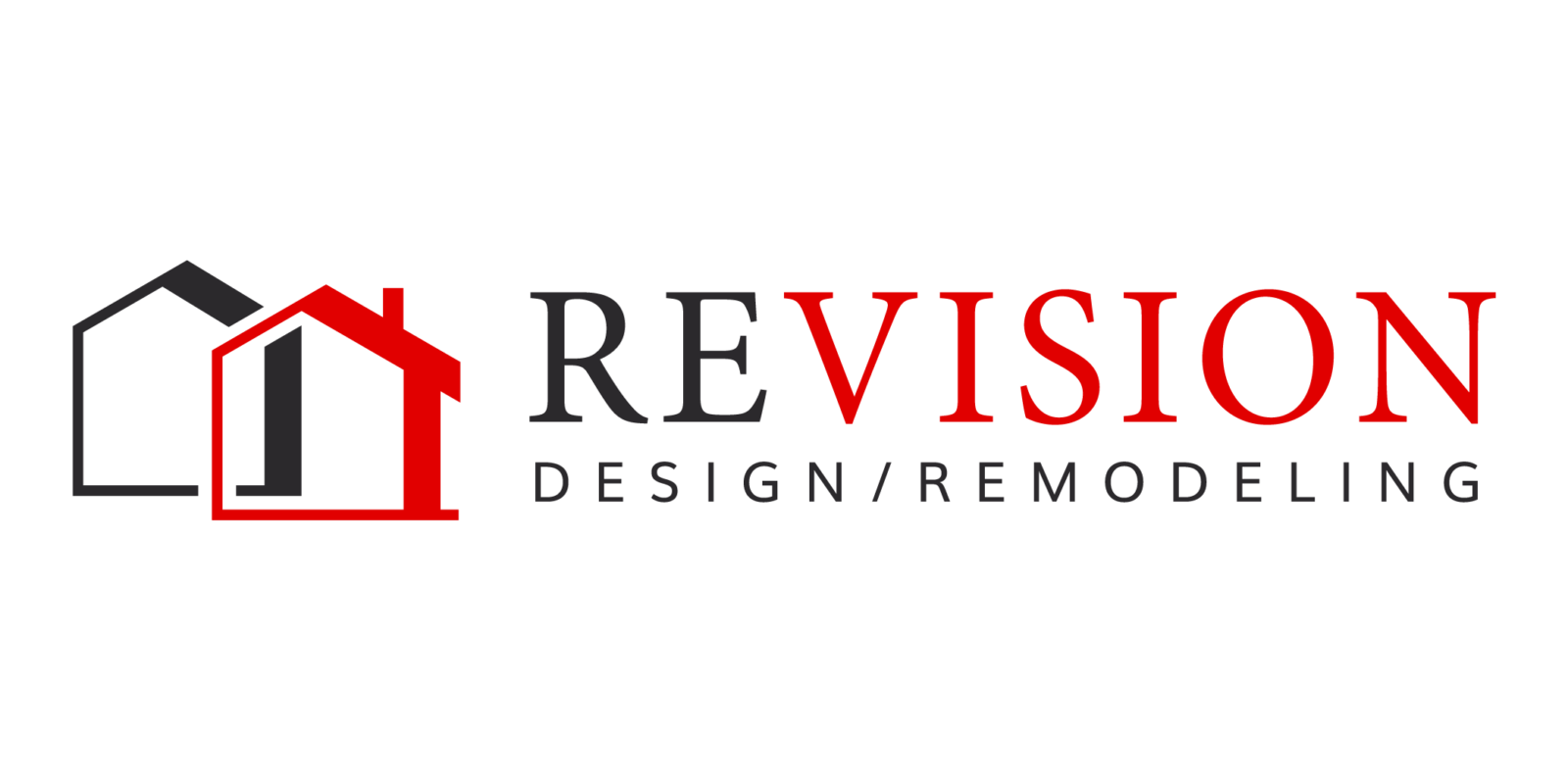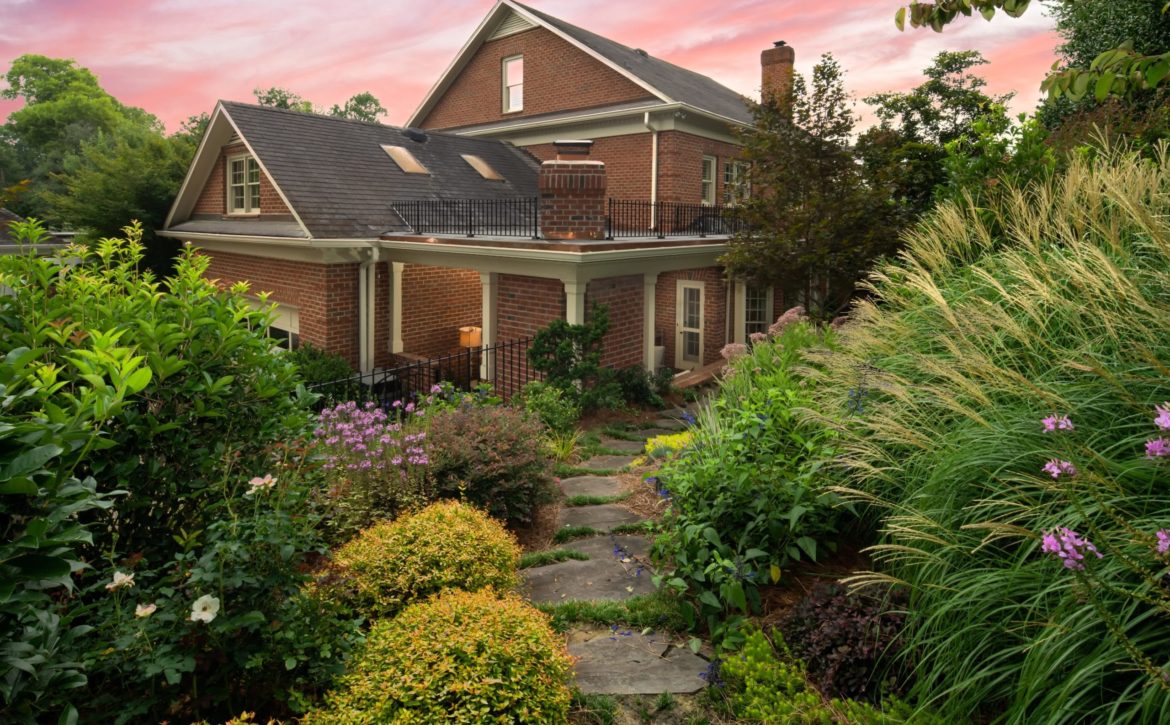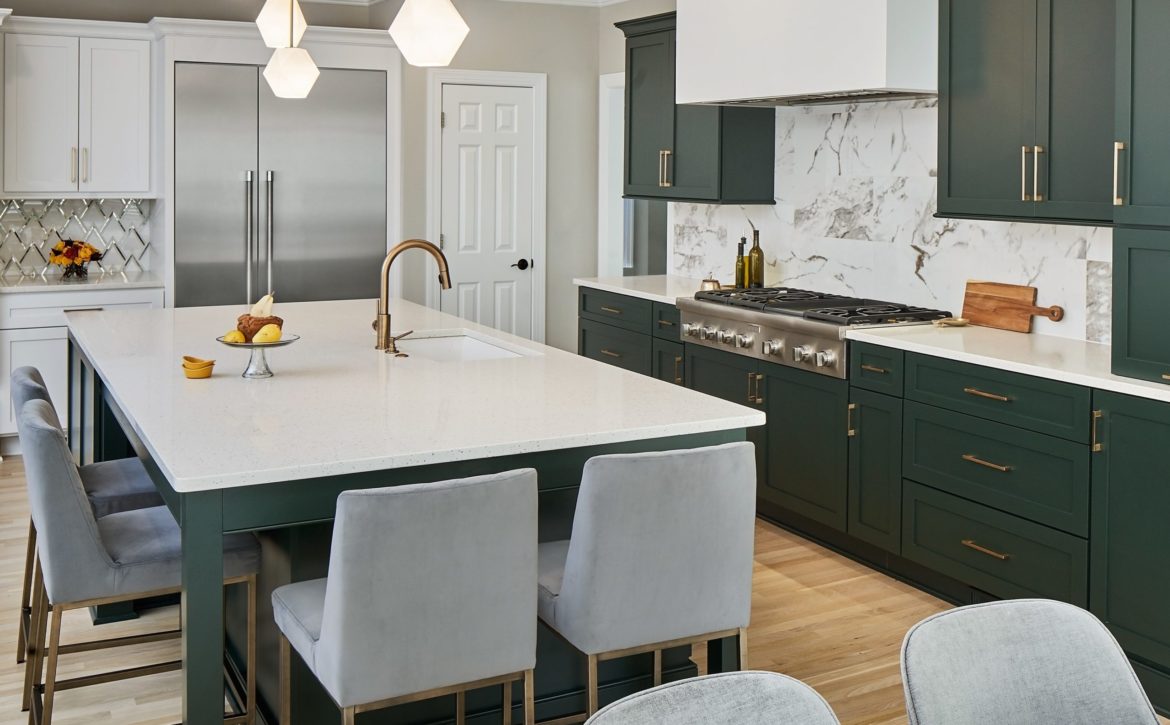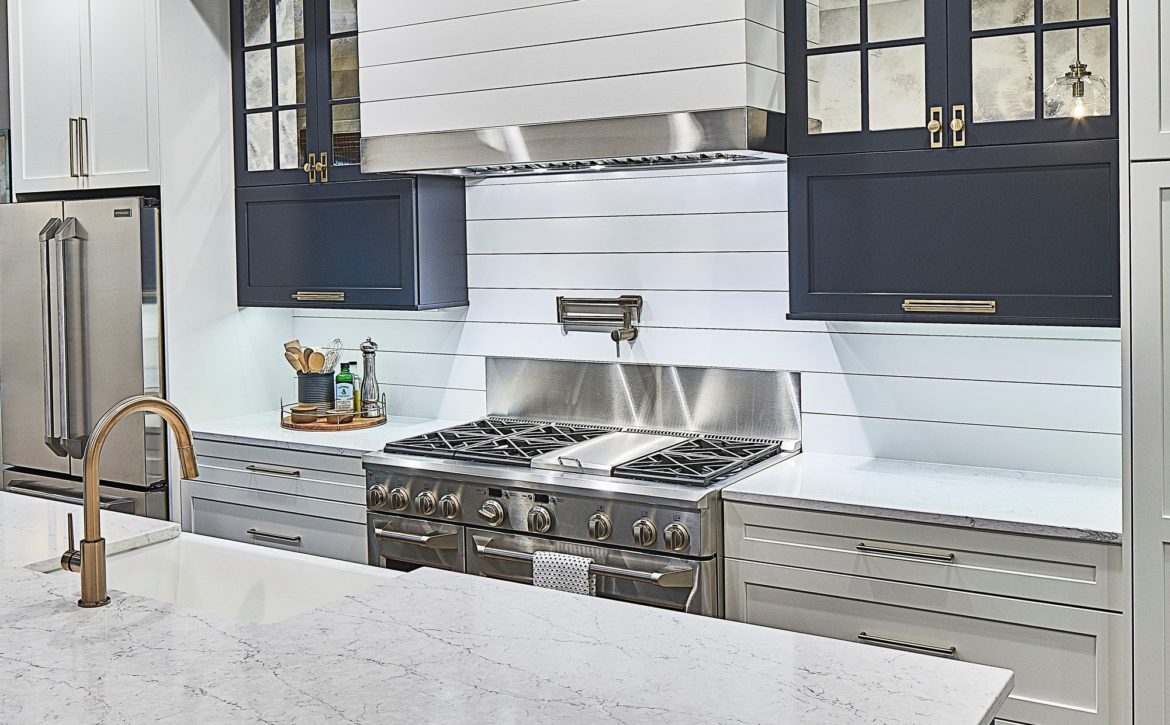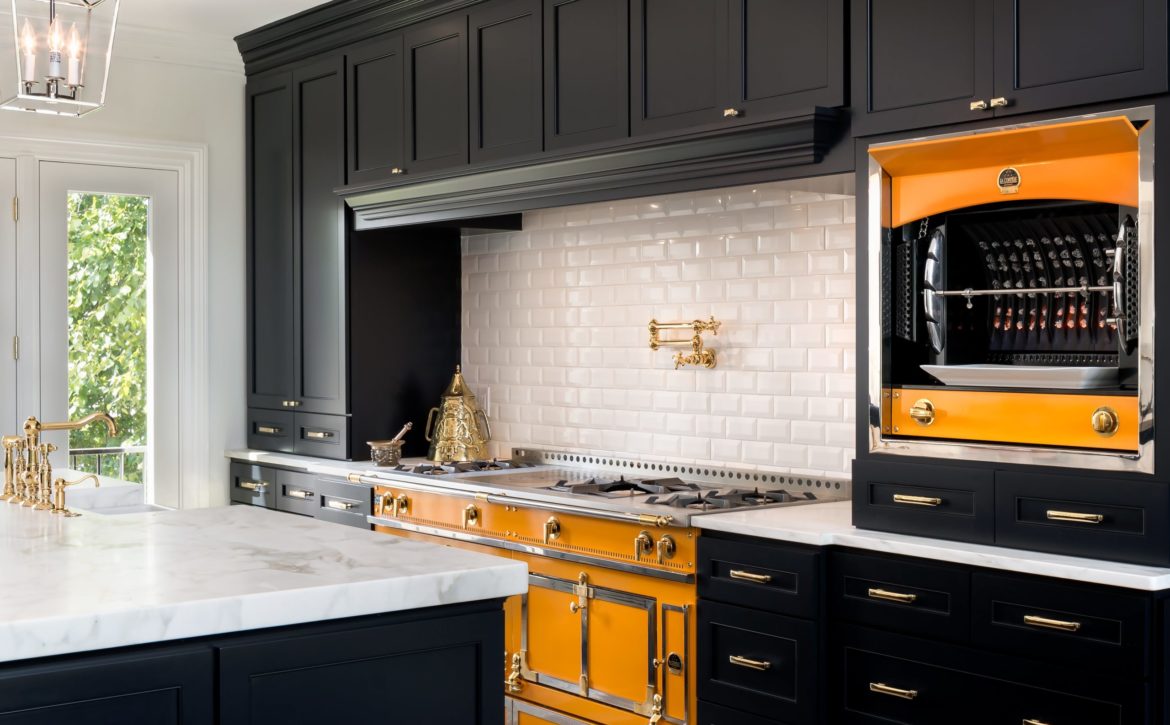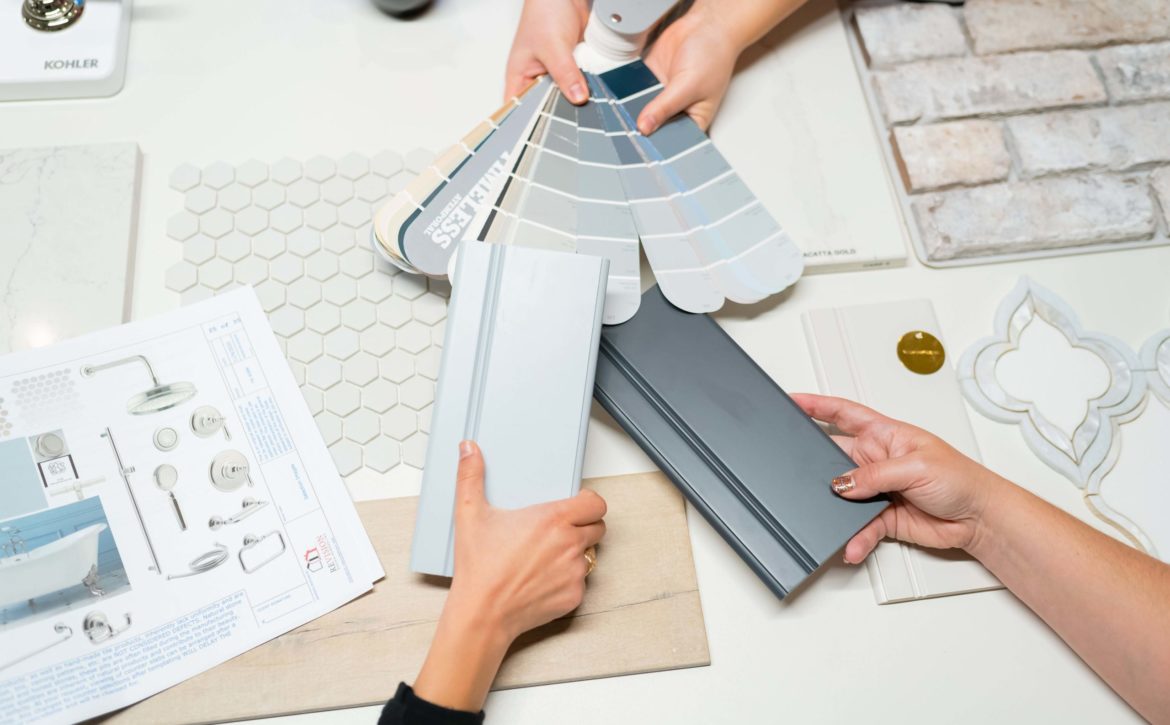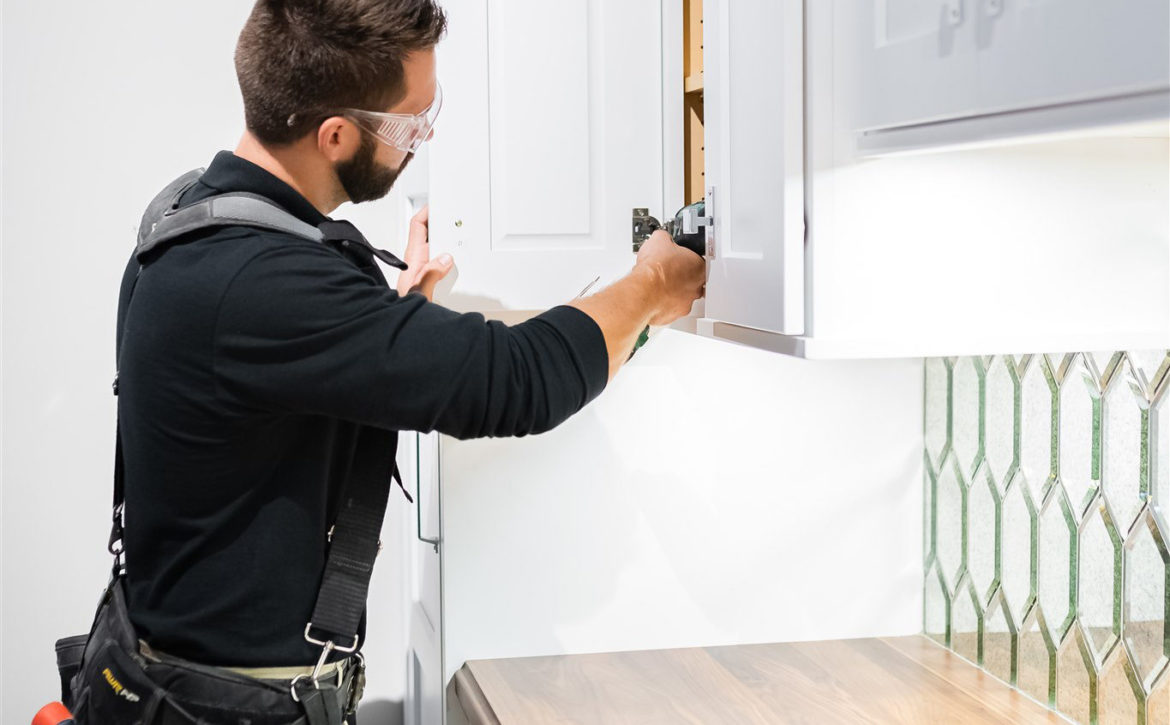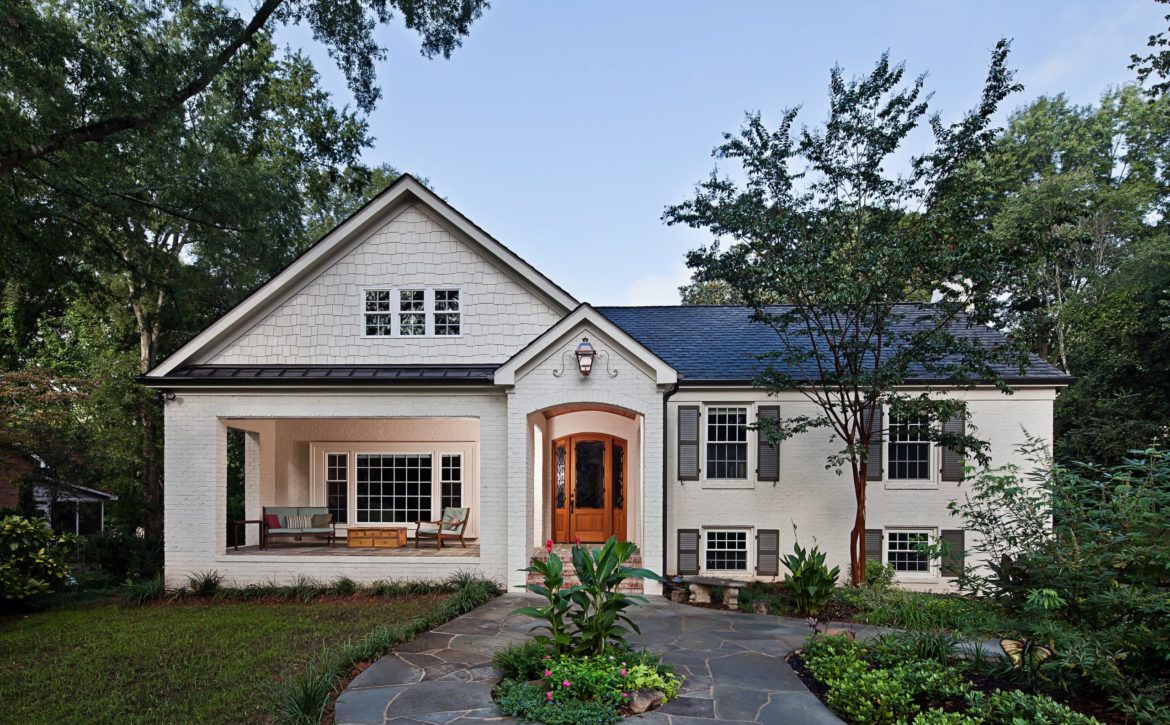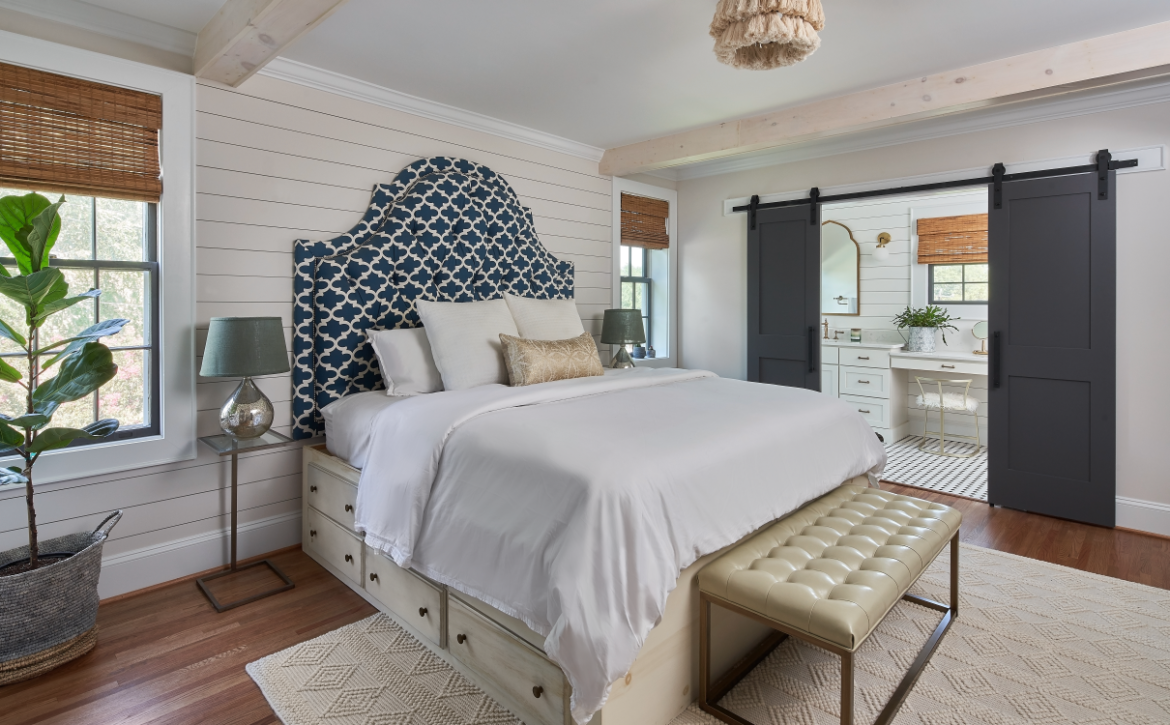Charlotte Architectural Styles and What They Mean for Your Home Remodel
Learn about Charlotte’s housing history which is rich with a diversity of architectural styles and themes that represent popular trends.
Learn about Charlotte’s housing history which is rich with a diversity of architectural styles and themes that represent popular trends.
The time has come for big decisions about your Charlotte home – should you remodel or move? Perhaps your kitchen is older than most college kids and is adorned with shades of brown and tan. Or maybe your bathroom is so old that the shower is growing things no amount of toxic chemicals can kill. You just found out that an in-law is coming to live with you AND you’re having ANOTHER baby! Ok, maybe not all of those things are happening to you all at once, but nonetheless, you are faced with the question that so many of our clients ask themselves (and us): should we remodel or move? It’s not an easy answer, but here are some great questions to discuss with your family while figuring out what’s right for you.
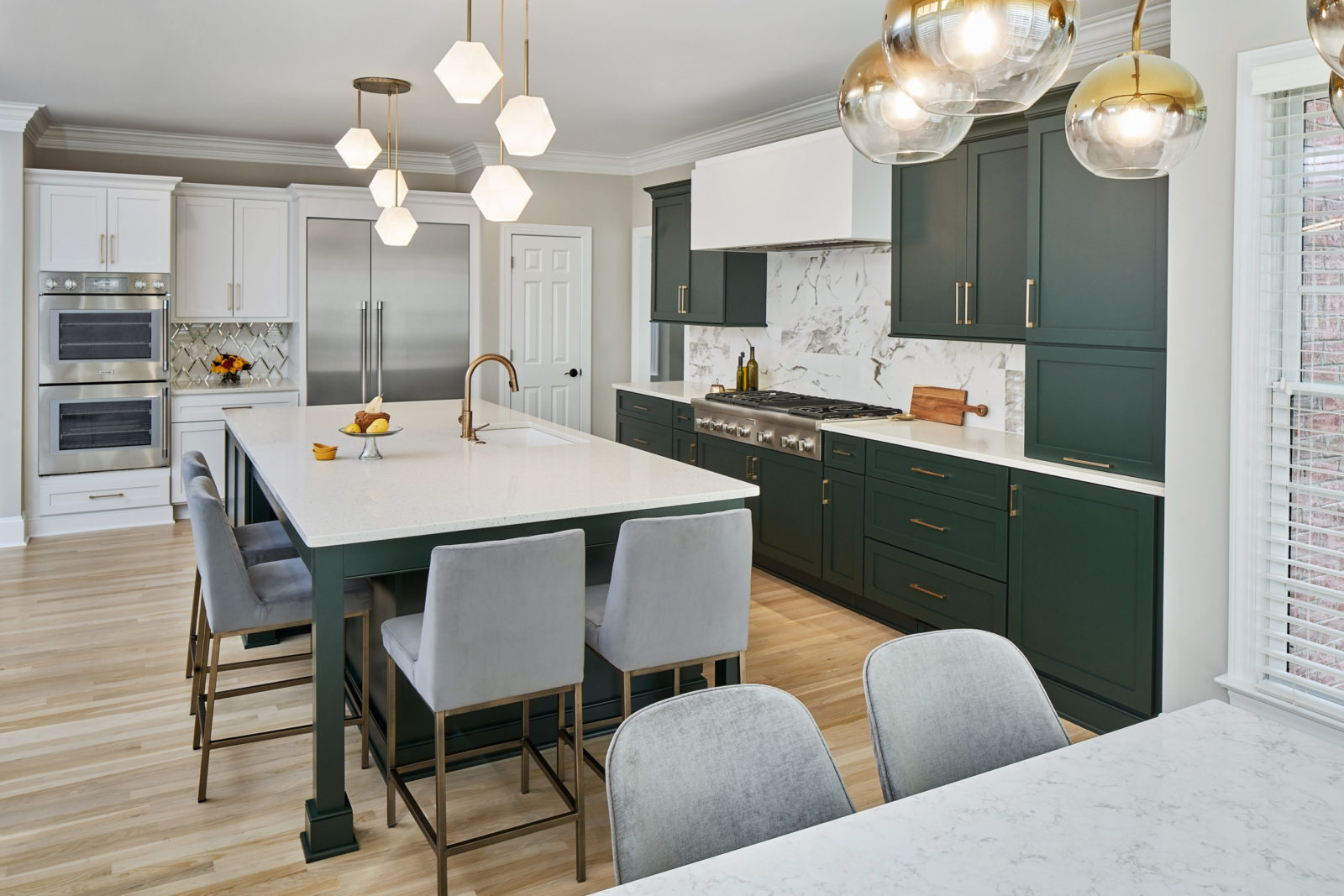
One of the biggest considerations when weighing remodeling versus moving is whether you like your neighborhood, the school system, the amenities, and the size of your yard. If you answer no to most of those, then start house hunting! If you answered yes, then focus on making the spaces in your home fit for how you and your family live and aim for a remodel plan. You can remodel your home, but you can’t choose your neighbors (sorry).
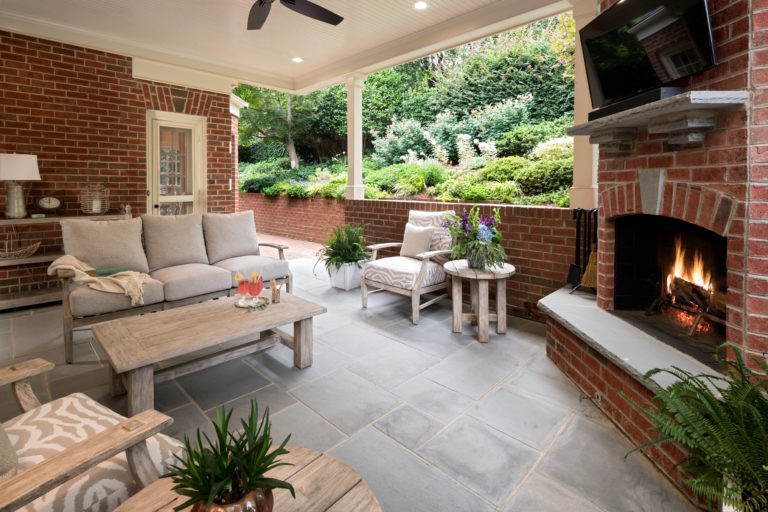
Both remodeling and moving require an investment in time and resources. Remember that there will be mover fees, real estate commissions, temporary housing, storage fees, and other moving expenses that could be put back into your current Charlotte house if you decide to remodel instead of move.
There’s also the cost of fixing up your house just to put it on the market. It will be hard to sell your home for top dollar if it needs expensive things like a new HVAC system, roof, or a new paint job. How does the yard look? What about that funny smell in the basement? How about that ceiling stain that’s been ignored for years because it didn’t bother you or you never found the time? All of these things will turn off a prospective buyer and will require an investment to remedy them before listing.
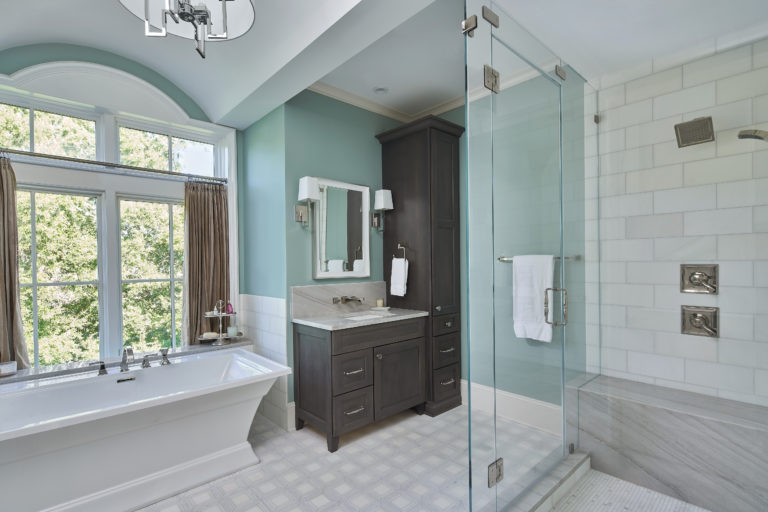
With extremely low housing stock at the time of this writing, it’s also unlikely you’ll find a home that’s in your desired neighborhood, school district, and price point that’s exactly what you want. It’s not uncommon for families to move to meet one need and then to remodel their new home to make up for what it’s lacking. Sometimes that’s the best choice, and other times it’s more effective to stay put and remodel your current home instead.
This is where a little homework will go a long way. Before you begin meeting with Charlotte remodeling companies to decide if your home is worth remodeling, make a list of all the things you want to improve. It may include a combination of minor fixes and improvements or larger ambitions like adding an owners’ suite addition. Now prioritize those needs and think about which ones are immediate and which ones you could stand to postpone if you had to.
A Charlotte remodeling professional can then help you understand all the other factors to consider that will need to be done to meet your goals. For example, to get a larger kitchen with the additional appliances you want, your electrical service may need to be replaced or significantly upgraded.
Or to expand your living room as part of an addition, you may need to redesign your outdoor living areas. Either way, you’ll either be pleasantly surprised that your project is not as complicated as you feared, or it is going to take more than you had thought. The important thing here is to find someone that you can trust to look at ALL of the factors to consider and not just the individual projects around the home. A comprehensive remodeling plan is important for making the right decision and for ensuring a smooth project with fewer surprises or headaches.
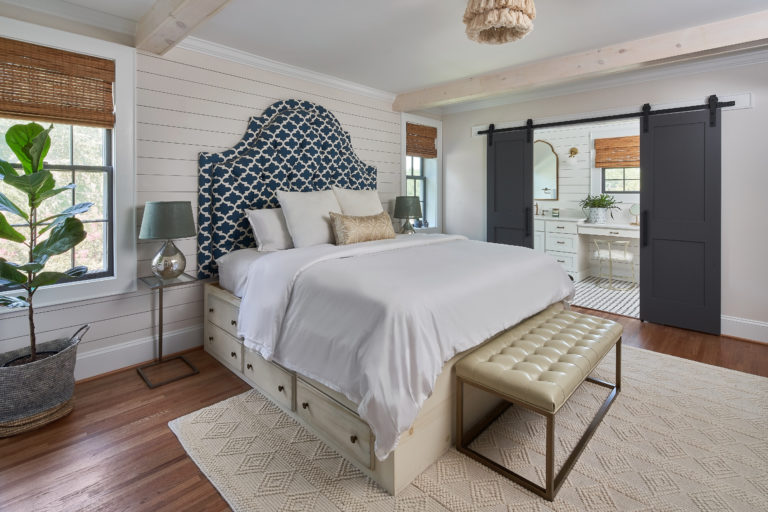
Deciding whether to move or remodel is a big decision that will have long-term impacts on you and your family’s comfort and health. Trust in a Charlotte design and remodeling company that can help you navigate all of the possibilities that your home has to offer before deciding that you need to search for another place to live.
If you’d like professional advice on whether to remodel your current home or start house hunting, we’d be happy to discuss your specific options in more detail. Reach out today with this home remodeling form and we’ll be in touch shortly!
Whether you’re moving into a rental property while you remodel your home, or you’re setting up a temporary kitchen in the dining room while your kitchen is being redone, the remodel construction schedule can be disruptive. Our homes are the nucleus of our lives, so it’s only natural to want to know how long your remodeling project will take. While we can apply the law of averages to give you a realistic expectation based on past experience, how long it will take to remodel your home is dependent on a number of factors.
Most of the time when a homeowner asks, “How long will it take to remodel my kitchen?” they’re referring only to the construction portion of the project – the messy, loud, inconvenient, and disruptive part television shows depict to be the absolute worst. We get it. That’s the time you’ll have to rearrange your house, your routine, and live in some state of mess. What’s important to note — the construction phase is only one part of the entire process and it comes at the very end. When speaking with our clients about timing, we find it gives them a better idea of the true time commitment when we talk about the process as a whole.
While most design-build remodeling firms are likely to have a similar process, we can only speak for ourselves. Here’s a brief outline of our process, and the steps that have to happen before the hammers ever start swinging:
The Design & Development Agreements is exactly how it sounds – an agreement between you and ReVision to begin the design portion of your remodeling project, based on a specific scope of work. Once you’ve set up a call to schedule a complimentary consultation with one of our Project Developers, they’ll meet with you at your home to take a look at your existing space, and discuss your goals and design ideas. Afterward, they’ll present you with a high-level outline (Design & Development Agreements) of the scope of work that it will take to remodel your home, including typical budget ranges appropriate for your goals and presumed level of selection. The timeline for this initial step depends heavily on the availability of both parties — typically, it takes 2-4 weeks to schedule the consultation, meet, outline, and present the Design & Development Agreements.
The length of the design phase usually comes down to four things:
The amount of time it takes to design and specify materials for a cosmetic update versus a custom redesign is significant. Most of our clients fall somewhere between the pull and replace and custom redesign levels, so we refer to those timelines most often.
Most of our clients average 9-12 weeks in the design phase. Smaller cosmetic projects may take considerably less time, just as remodeling your whole home may take longer.
The final design, including plans and all materials selections and images, will be part of your contract documents and approved prior to ordering. Keeping everything organized in one document means never having to remember all the details. Many of our clients like to use their selections images as a handy reference for choosing new furnishings or window treatments while there’s downtime prior to construction.
Before we can begin remodeling your home, all of the materials needed to complete your remodeling project will have been approved, ordered, and delivered. This may include cabinetry, plumbing, lighting, tile, hardware, doors, and windows, lumber, etc. We typically shy away from beginning the demo until all the parts and pieces are in and accounted for. This helps to prevent an opportunity for an unexpected delay and further disruption should something arrive late or damaged. While it doesn’t happen often, it is possible, and we’d hate for a project to come to a stop because a critical piece needed to be reordered.
All of the cabinetry we use is made to order and usually takes 6-8 weeks to be built and delivered. Most remodeling projects we do contain cabinetry, but for those that do not such as screen porches or living space additions, other materials with longer lead times may include custom or specialty windows and doors. Even without long lead times on materials, it still takes a couple of weeks to work out the logistics, so plan on anywhere from 3-8 weeks from contract signing to demo day, with 8 weeks being most common.
Just as the design phase timeline varies based on what type of remodel you’re pursuing, so does the construction timeline. A Cosmetic project could be done in as little as 2-4 weeks, while a Pull and Replace project will take 6-8 weeks. Depending on the scope and complexity, a Custom Redesign may take 8-10 weeks. This number can rise if a large addition is involved.
Whether you have a specific end date in mind for remodeling your home or not, we’ll work with you to create a timeline that suits your schedule. Some of our clients plan well in advance so they can coordinate their vacations around the messiest stages of construction (mainly demo and floor refinishing). Others don’t have a specific construction schedule in mind, and just want to take their time. If you want to figure out the ideal time to remodel your home, it’s best to start with the end in mind and work backward from there.
Curious to know what a remodel would look like in your home? Give ReVision a call or schedule a conversation to speak with one of our Project Developers about your goals.
No matter how confident you are, if you’ve ever considered remodeling or redesigning your home it’s inevitable that you’ve considered a bold color palette asked yourself, will I still like what I choose today, ten years from now? The truth is, trends will continue to change as product lines and designers continue to innovate. Sure, the classics will continue to repeat themselves as they are reinvented in some shape or form indefinitely (think white kitchens and black and white bathrooms), but overall, styles evolve, and yours likely will too.
We live in a society of instant gratification and constant comparison. The paradox of choice is a very real phenomenon – we sometimes see it with our clients as they’re going through the design phase after months of Pinterest addiction. Quite simply there are too many options, and the fear of finding something better paralyzes them into indecision. But here’s the thing – there will ALWAYS be something better. When we make a suggestion for a material or product it’s because we know it will get you the result you’re looking for, even if you can’t see how it relates to the big picture. If you’re one of those people that’s drawn to a bold color palette or designs — as designers, we can totally relate –choose one thing and truly make it your own. Everything else will fall into place.
If you’re still worried about committing to a bold design, it’s important to consider which phase of life you’re in and how much longer your family intends to stay in your current home. If you know you’ll be moving in the next 3-5 years, erring on the more conservative side would be wise. You don’t want to deter a potential buyer by choosing something highly trendy that’s difficult or incredibly costly to replace. Nothing is truly permanent, but purple kitchen cabinets are going to be much more difficult to change than kitchen faucets or decorative lighting.
Sticking around for ten years or more? Do what makes you happy. Ten years is a long time to live with something you don’t absolutely love. You can tone it down when it’s time to put your house on the market after years of enjoyment.
As a design-build remodeling company, our design team loves any opportunity to flex our creative muscles to create something you’ll love. At the annual Kitchen & Bath Industry Show (KBIS), colors were huge for 2019. We’ve been seeing a resurgence of bold color slowly creeping back into the market for a couple of years now. As consumers get exposed to new trends, and let go of the fear of avocado green trauma from the 1970’s, we’ll be seeing more and more color introduced into the home.
Whether you’re a classicist, or a trend-setter, we thought you’d like to see some of our favorite new products from KBIS and how you could work them into your kitchen or bathroom remodel.
You know we love mixing metals, so it may come as no surprise that we are absolutely smitten with the new ombré finish on Kohler’s Sensate Touchless kitchen faucet. Your kitchen faucet is the most used fixture in your house, so choosing one that’s made of high-quality materials is always worth the cost. In addition to the innovative two-tone finish that transitions from rose gold to polished nickel (or titanium to rose gold) we also love the touchless technology. The last thing you want to do when you have raw chicken juice all over your hands is touch anything. Touchless technologies ensure you can wash your hands without spreading grease or bacteria, saving you clean-up time and creating peace of mind for you and your family.
It’s not uncommon to want to choose more cost-effective materials for your kids’ bathroom in order to splurge on your master suite. But cost-effective doesn’t have to be boring. Why not introduce a colorful stripe pattern in the shower using the new Color Wheel Collection from Daltile?
Classic stripes are synonymous with laughter-filled summer afternoons by the pool – who doesn’t want that feeling year-round? If navy is the new black, then emerald is the new navy. We’d love to see an emerald and white stripe paired with a black painted vanity, white quartz counter for easy maintenance, and brushed brass plumbing fixtures. Anyone ready to remodel their kids’ bathroom?
Not ready to commit to bringing a bold color palette indoors? How about setting your house apart from the neighbors with some colorful exterior door hardware. While we are huge proponents of a colorful front door, this is an either-or situation. Turquoise hardware on a red door is probably not going to give you the look you were after, but turquoise hardware on a black, mid-century, modern style door may be just the thing to make you say, Welcome home, at the end of a long day. While we don’t expect anyone to rush right out and buy this hardware, we thought it was a clever way to introduce a bold color in an unexpected place. This could easily be repeated around the front door by adding matching, colorful planters.
Whether you’re on board with the bold color trend or you think that neutral is always the way to go, don’t be afraid to stretch your limits — especially if you’re planning on staying in your home for a long time. Unsure of where to start? Our design team would love to help guide you through the home remodel of your dreams. Give us a call today to start a conversation.
If you’re like most of our clients you’ve spent months, maybe even years dreaming about how remodeling your home will improve your life and bring your family and friends closer together. You’ve gathered up the courage and the funds to finally get started, and your Pinterest board and Houzz Ideabooks are full of inspiration that you can’t wait to share with your designer. You’ve talked to numerous friends and family about their remodeling experiences to get advice, and you’ve met with several remodeling companies that provide the all-in-one service you’re looking for, and narrowed it down the team you trust the most. The days of living in your old space are coming to an end, and you’re finally ready! Your whole family is excited! Let’s go! Let’s go! Let’s go! Let’s get started now!!
Having that sense of urgency is understandable. When we finally gather the courage to take on a huge change, it’s natural to want it to happen quickly – especially when we know it’ll be disruptive and uncomfortable for a little while. The same is true for home remodeling, but unfortunately even the best remodeling companies can’t turn around a renovation in a week. Planning, staging and executing any remodeling project is an involved process with a series of necessary steps before the first hammer ever swings.
Here’s an overview of the design-build remodeling process:
It all starts with scaled conceptual 3D renderings to establish a general direction towards a final design. After meeting with you in your home to take detailed as-built measurements and listen to your goals for the project, your designer will work with you to present the best layout to meet your specific needs. After a few tweaks, conceptual plans then get converted to detailed construction-ready documents.
Remodeling means transforming an existing space, so before estimates can be finalized, a team of trade professionals needs to comb the existing structure to see what will be required to transform it from its current state into your dream home. Plumbers, electricians, HVAC specialists, and structural engineers are just a few of the trades we team up with during this process.
While it is not uncommon for some remodeling companies to present a contract full of allowances for fixtures and finishes, we always prefer to minimize the unknowns by making those decisions well before contract signing. It helps us control the budget and the timeline since we are able to order and stage all materials well in advance, and who doesn’t want to save time and money? Don’t worry, our designers will guide you through the selections process and present materials and finishes that meet your functional and aesthetic needs. We utilize a series of spreadsheets to keep track of everything from cabinetry details to plumbing fixtures, light switch style to countertop edge profiles, because we know firsthand that the details can make or break a project, so we make sure to keep a close eye on them.
With a detailed contract and construction plans in place, permits can be applied for, custom materials can be ordered, and crews can be scheduled. One final walk-through with the construction and design team ensures we’re all are on the same page before work begins. This is also the time we discuss detailed information about construction logistics and disruptions (parking, dust control, work hours, debris, etc.), especially if you plan to remain in the home while the project is underway, as most of our clients do.
From the time you choose ReVision Design/Remodeling to the moment the construction begins, we’ll be here to help. Following the necessary steps will take time, but the end result will be well worth the wait!
When you’re ready to schedule a conversation with one of our Project Developers to discuss your project, we’d love to hear from you!
The first question any homeowner should ask him/herself is: Should I remodel? Figuring out the answer can be more difficult than you might expect. You might be dying to update your house, but that doesn’t mean it makes sense in terms of your family’s lifestyle or budget. And many other considerations come into play. Below are five questions to ask yourself to help you figure out if you need to embark on a remodeling project.
If you’re frustrated with your house, it’s important to consider why. Maybe you want to entertain, but the house doesn’t have good spaces for people to gather. Or maybe you really need a home office. Or perhaps adding a bathroom will add harmony to your family life. Maybe it’s a combination of outdated features: a too small kitchen, a too pink bathroom, and inadequate storage options. Perhaps you simply might need to bring an older house in line with the needs of a contemporary family. If there are many different ways in which the house doesn’t meet your needs, then a remodeling project might be the way to address the problems.
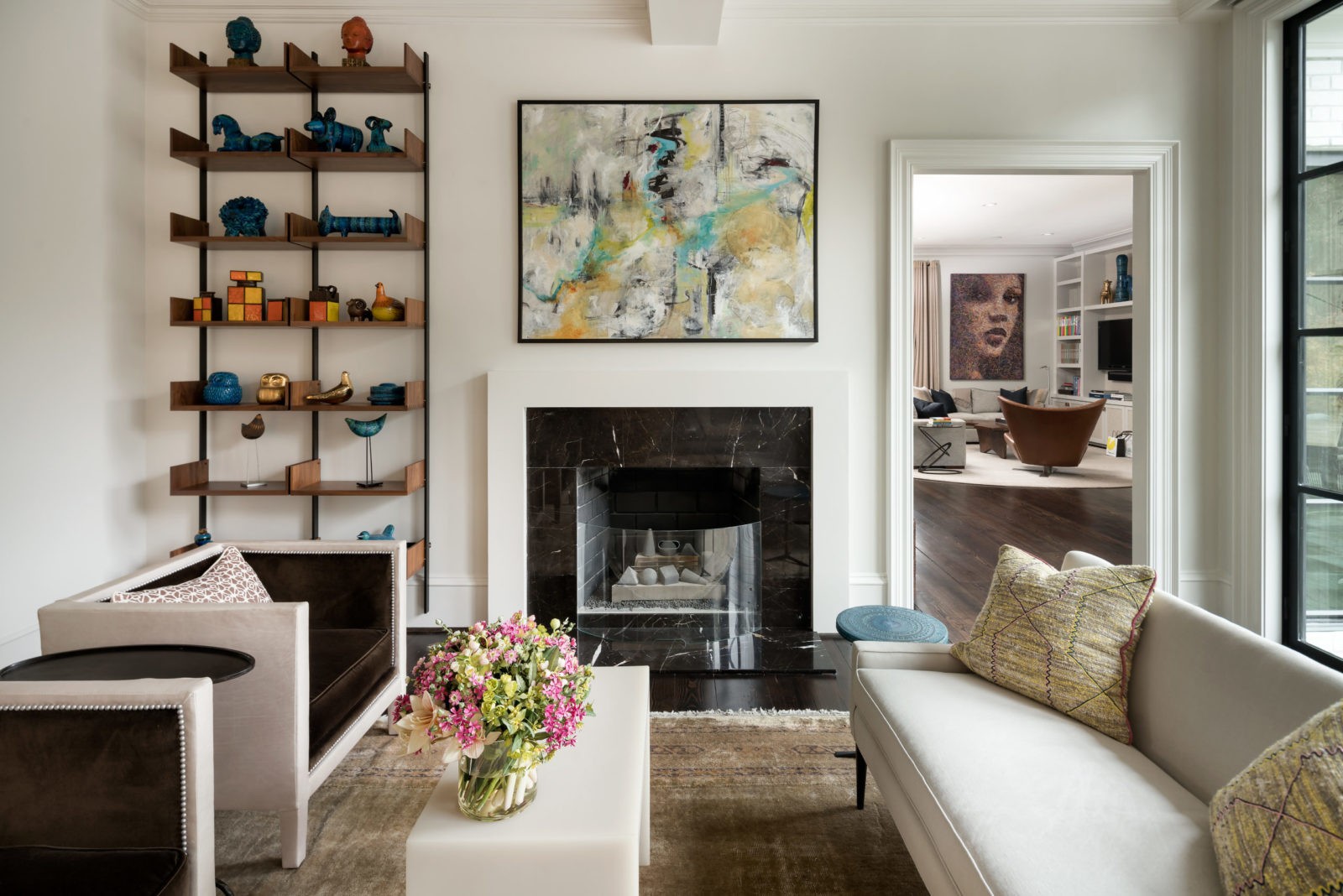
Make a list of everything you would like to change, from the size of the kitchen to the color of the walls and the style of the light fixtures. Then prioritize the list. Which things are must-haves and which things can you do without? Before you embark on any planning, you need to have clear goals in mind. Whether you need a more up-to-date kitchen, bigger closets, or a more attractive entryway, you should have specific ideas of what you want to accomplish. If you’re not sure what you want, you’re more likely to end up with a result that’s less than satisfactory.
The answer to this question influences your remodeling decisions in a couple different ways. You might have a new addition to the family—a baby, adult child, or elderly relative. Or you might be anticipating such an addition and need to plan with that contingency in mind. Multi-generational homes are more and more common, making homes more crowded, but remodeling can give everyone more breathing room. Similarly, if you’re retired or planning to retire in this home, you should consider remodeling with the principles of universal design in mind. Universal design can make your home safer and more accessible if you ever experience limited mobility.
This is a particularly important question if you’re planning to sell the house in the next five years. You don’t want to invest a lot of money on remodeling projects that don’t increase the value of your house. Do some research to understand the average return for the kind of remodeling project you’re considering. Some projects recoup 75-100% of their costs, depending on the area, while others have a lower return on investment. But don’t get fooled by the size of the project; sometimes small projects can pay off handsomely. Cost vs. value considerations can also impact the choices you make as you plan your remodeling project. You might love the idea of making your home theater hot pink or adding cherry red counters to the kitchen but consider whether those choices might make the house harder to sell.
This is a delicate subject. Nobody likes to talk about money but figuring out a budget is an essential part of the process. You need to know what you can realistically afford and what can be achieved on that budget. Research your options—from hardware to appliances to flooring—so you know what you can expect to spend on each item and which things you can afford to splurge on. Remember that a lot of remodeling projects run over budget, so don’t stretch it the max when signing the contract; you’ll probably need a contingency fund. And, when devising a budget, don’t forget the costs of dislocating your family. If you will need to move out of the house, take rent into consideration. If you will lose access to your kitchen for a month or more, remember that it will have an impact on your food budget.
Considering a remodeling project? Schedule a call with one of our Project Developers.
Curb appeal is all about creating that first impression of your home. It tells visitors what kind of people you are and creates a welcoming environment. If you’re trying to sell your house, curb appeal is essential to creating a positive impression.
Curb appeal refers to the visual attractiveness of a property when viewed from the street or sidewalk. It is the first impression that a passerby or potential buyer will have of a home, and is an important factor in the overall value and marketability of a property.
Curb appeal can encompass a wide range of factors, including the appearance and condition of the exterior of the home, the landscaping and hardscaping features, the condition of the driveway and walkways, and the overall cleanliness and upkeep of the property.
The term “curb appeal” is believed to have originated in the United States during the early 1970s, a time when suburban housing developments were becoming increasingly popular. The phrase is derived from the concept of the “curb,” which refers to the edge of the street or sidewalk where a property is located.
The idea of curb appeal was introduced as a way to promote and enhance the visual appeal of homes and encourage people to invest in their properties. The concept quickly caught on and has since become a common term in the real estate industry, with many homeowners and sellers striving to improve the curb appeal of their properties to attract potential buyers and increase their value.
Curb appeal can greatly impact the property’s overall value, attractiveness, and desirability. Here are some key reasons why curb appeal is a big deal:
Good curb appeal can significantly increase a property’s value. It’s a smart investment to spend time and money on improving the exterior because it can pay off in the long run. When a property’s exterior is visually appealing and well-maintained, it creates a positive first impression that can greatly influence the perceived value of the property. Homes with good curb appeal often sell for a higher price than similar properties with a less attractive exterior.
Additionally, potential buyers are more likely to make an offer on a property with good curb appeal, which can create a bidding war and drive the price up. A well-landscaped and maintained exterior can also indicate that the property has been well-cared-for, which can give buyers the confidence to invest in the property.
A property with good curb appeal can also be safer and more secure. A well-maintained exterior, including trimmed shrubs, proper lighting, and visible address numbers, can deter potential burglars and intruders. The presence of outdoor lighting, in particular, can make a property less vulnerable to break-ins by providing visibility at night.
Additionally, the presence of well-maintained landscaping and hardscaping can help prevent accidents and injuries. For example, a clear walkway and a well-maintained driveway can reduce the risk of slip-and-fall accidents.
Moreover, visible address numbers can help emergency responders find a property quickly in the event of an emergency.
Landscaping and exterior upgrades can be strategically planned to provide shade during the hot summer months, reducing the need for air conditioning. For example, the addition of a tree or large shrub on the west side of a house can block direct sunlight and reduce the interior temperature by several degrees.
Similarly, a well-insulated and sealed exterior can prevent heat from escaping during the colder months, reducing the need for heating. Properly placed landscaping can also serve as a windbreak, protecting the property from cold winter winds.
There are several consequences of bad curb appeal for a property.
Firstly, it can negatively impact the overall value of the property, making it less attractive to potential buyers and reducing the amount that sellers can command for it.
Secondly, it can discourage people from even considering the property, as a poor first impression can be difficult to overcome. In some cases, bad curb appeal may even deter potential tenants or renters from leasing the property.
Additionally, if a property is not well-maintained on the outside, it can signal to others that the property may not be well-maintained on the inside as well, potentially leading to further issues down the line.
Finally, poor curb appeal can also reflect poorly on the surrounding neighborhood or community, contributing to a negative perception of the area and further decreasing property values.
The front door is the focal point of the front of your house. Make sure it’s appealing. It might just need a coat of paint, but it also might need to be replaced. If it looks dated, you might want to replace it with something more up-to-date or something that fits your home’s architecture. Replacing the front door has one of the highest returns on investment for any home improvement project since it’s easy and relatively inexpensive, but it has a big impact. Don’t forget to address the elements around the front door as well. The right trim can make a front door pop.
Your front walkway is the visitor’s path into your home and can make it feel warmer and more inviting. If parts are cracked or broken — or weeds are growing through — you should repair or replace it. Consider alternatives to straight concrete paths. A brick or stone path with some curves adds visual interest, or you can edge an existing walkway with brick or stone.
Homes without landscaping can look bare and forbidding. The right landscaping can soften the straight edges of your house and make it more inviting. Don’t limit yourself to landscaping near the house either; you can add a bed of flowers or plantings anywhere in the yard. Be sure to take a critical look at your existing landscaping as well. Maybe you need to replace some overgrown bushes or do some basic weeding and pruning. You might want to sharpen up the borders of your planting beds or add concrete borders. You can also consider adding some decorative elements such as a sculpture, birdbath, or fountain.
If your doorway is flush with the front of the house, it may give a bland, one-dimensional appearance from the street. Similarly, if you have a recessed doorway, the entrance can feel hidden in shadows. Adding a portico will give depth and character to the front of your home but be sure to choose a portico style that harmonizes with your home’s architecture. An added benefit of a portico is that it can keep you—and your visitors—dry as you enter the house.
This can be as simple as a new coat of paint, or it could include new trim, different finishes on the home’s exterior, new siding, fresh shingles, and adding shutters. While you’re at it, think about whether you want to replace your exterior light fixtures. Maybe it’s time that your lamppost and entrance lights look more up-to-date. Consider adding a splash of color with a bold new shade for your front door, a bed of colorful new flowers, or some eye-catching porch furniture.
You don’t want visitors’ first impressions to be that you neglect your house. Putting off maintenance can reduce your home’s value. Here are some things to look for:
Trying to add some curb appeal to your home? Schedule a complimentary consultation with us today! Our designers can go over ideas, big and small, to transform the look of your home’s exterior.
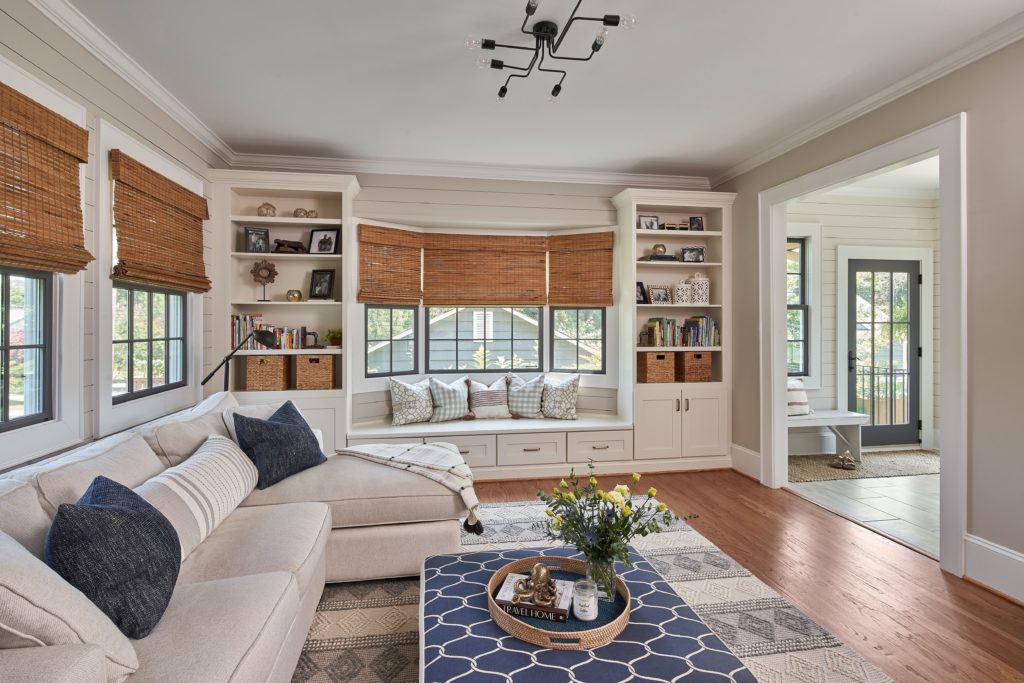
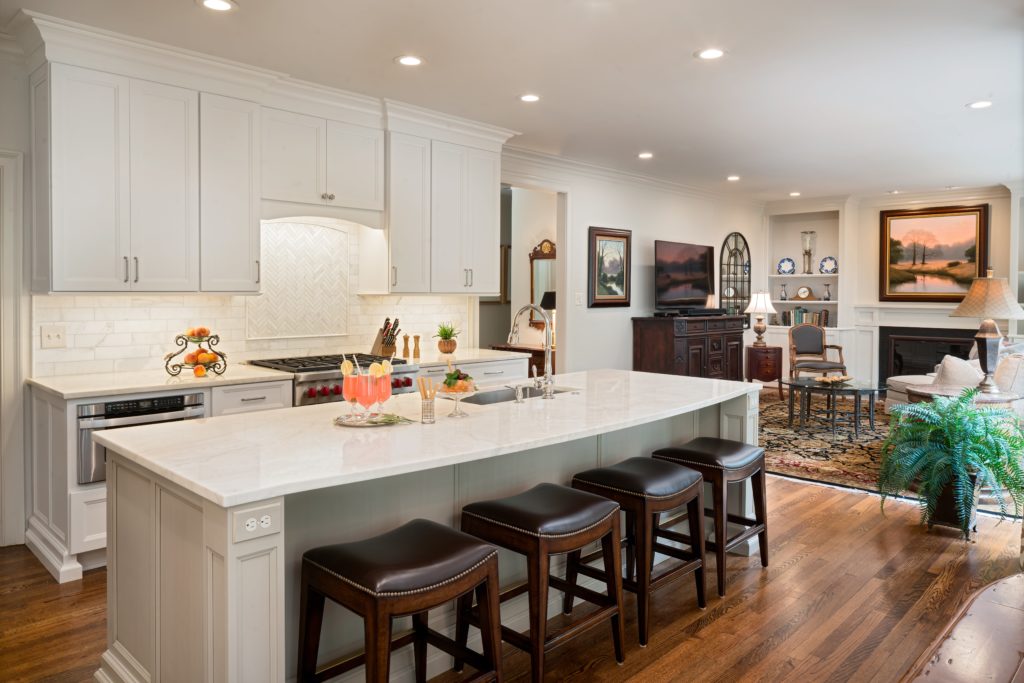
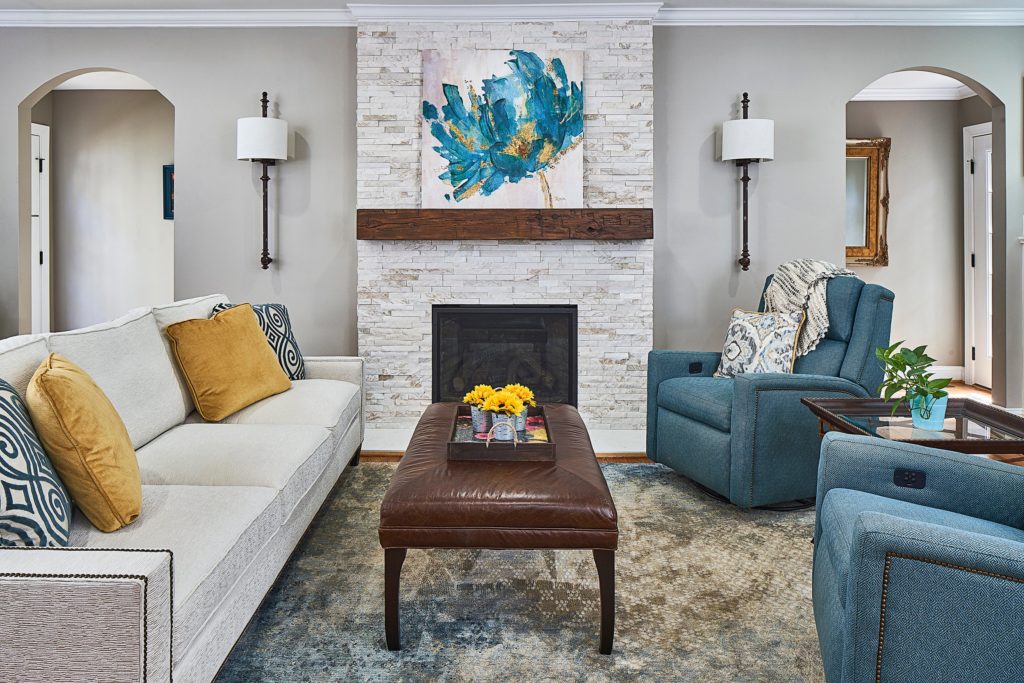 Considering a remodeling project and want to know you’re getting unparalleled quality and craftsmanship in the Charlotte area? Get in touch with us today.
Considering a remodeling project and want to know you’re getting unparalleled quality and craftsmanship in the Charlotte area? Get in touch with us today. 